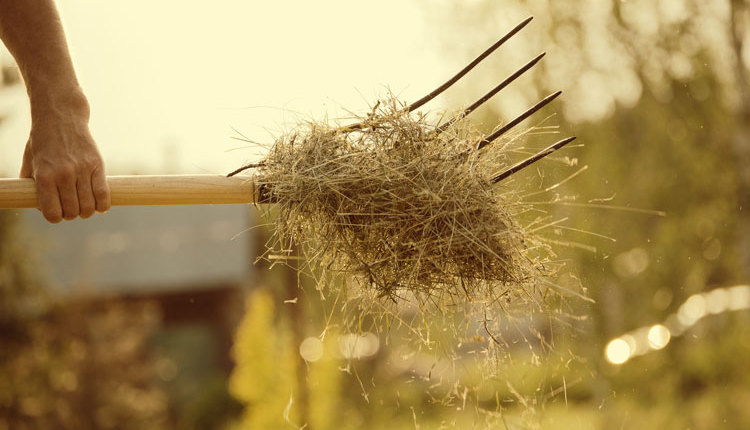Today's high price for beef may entice more dairy producers to raise some steers as a second enterprise. Mixed with the more cost-friendly price of grain right now, feeding out steers may seem like a very viable option. Before taking the plunge, though, one must first consider all the costs associated with raising cattle.
Whether you are raising dairy or beef cattle, feed is the single largest expense. But, other expenditures can eat away at profitability, too. Don't forget the little expenses that can add up big over time.
In the beef cattle industry, those extra, non-feed costs are grouped together in a term called yardage. Yardage costs are the daily non-feed expenditures associated with raising cattle. Non-feed operating costs, including labor, veterinary care, bedding, fuel, utilities, office supplies, repairs, and processing, are all part of yardage. It can also include fixed costs such as taxes, insurance, depreciation and interest on long-term assets.
Yardage is calculated on a per head per day basis. What exactly goes into a yardage calculation can vary farm to farm, and certain factors - age of facilities, paid versus unpaid labor, owned versus leased equipment and expenses shared between other enterprises - all play a role in true yardage costs. Still, trying to determine the number is beneficial to livestock producers.
A group of extension agents with the University of Wisconsin-Extension collected information from 17 livestock farms raising at least 50 percent dairy steers to get a feel for average yardage costs. The farms varied in size from 34 head on feed to 1,000.
The average yardage cost, including paid and unpaid labor and management, was $0.96 per head. The range was $0.47 to $1.45 per head per day. To take a closer look at the results, view the UW Extension Holstein Steer Finishing Yardage Cost Survey paper.
The wide variation in yardage costs is not unexpected, considering the extensive differences between livestock operations. For that reason, it is even more important for each operator to calculate their own costs to best evaluate strengths and opportunities for their farm, in both their dairy and beef enterprises.
 The author is an associate editor and covers animal health, dairy housing and equipment, and nutrient management. She grew up on a dairy farm near Plymouth, Wis., and previously served as a University of Wisconsin agricultural extension agent. She received a master's degree from North Carolina State University and a bachelor's from University of Wisconsin-Madison.
The author is an associate editor and covers animal health, dairy housing and equipment, and nutrient management. She grew up on a dairy farm near Plymouth, Wis., and previously served as a University of Wisconsin agricultural extension agent. She received a master's degree from North Carolina State University and a bachelor's from University of Wisconsin-Madison.
Whether you are raising dairy or beef cattle, feed is the single largest expense. But, other expenditures can eat away at profitability, too. Don't forget the little expenses that can add up big over time.
In the beef cattle industry, those extra, non-feed costs are grouped together in a term called yardage. Yardage costs are the daily non-feed expenditures associated with raising cattle. Non-feed operating costs, including labor, veterinary care, bedding, fuel, utilities, office supplies, repairs, and processing, are all part of yardage. It can also include fixed costs such as taxes, insurance, depreciation and interest on long-term assets.
Yardage is calculated on a per head per day basis. What exactly goes into a yardage calculation can vary farm to farm, and certain factors - age of facilities, paid versus unpaid labor, owned versus leased equipment and expenses shared between other enterprises - all play a role in true yardage costs. Still, trying to determine the number is beneficial to livestock producers.
A group of extension agents with the University of Wisconsin-Extension collected information from 17 livestock farms raising at least 50 percent dairy steers to get a feel for average yardage costs. The farms varied in size from 34 head on feed to 1,000.
The average yardage cost, including paid and unpaid labor and management, was $0.96 per head. The range was $0.47 to $1.45 per head per day. To take a closer look at the results, view the UW Extension Holstein Steer Finishing Yardage Cost Survey paper.
The wide variation in yardage costs is not unexpected, considering the extensive differences between livestock operations. For that reason, it is even more important for each operator to calculate their own costs to best evaluate strengths and opportunities for their farm, in both their dairy and beef enterprises.
 The author is an associate editor and covers animal health, dairy housing and equipment, and nutrient management. She grew up on a dairy farm near Plymouth, Wis., and previously served as a University of Wisconsin agricultural extension agent. She received a master's degree from North Carolina State University and a bachelor's from University of Wisconsin-Madison.
The author is an associate editor and covers animal health, dairy housing and equipment, and nutrient management. She grew up on a dairy farm near Plymouth, Wis., and previously served as a University of Wisconsin agricultural extension agent. She received a master's degree from North Carolina State University and a bachelor's from University of Wisconsin-Madison.










